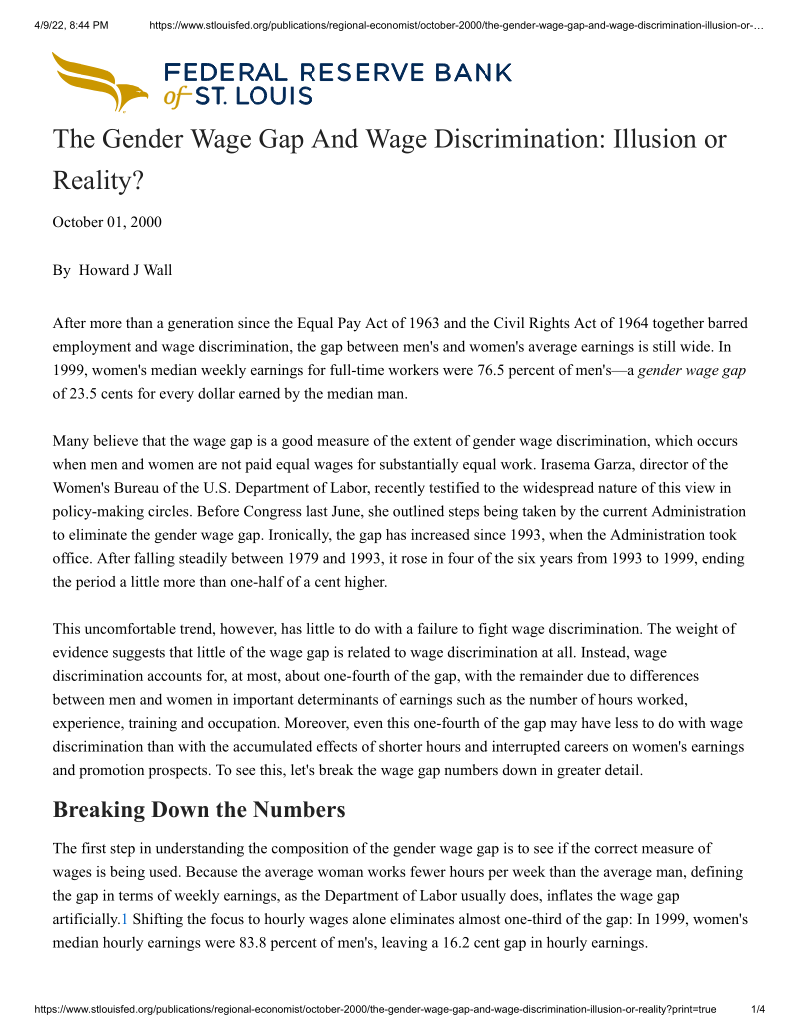Federal Reserve study finds that the adjusted gender wage gap is much smaller than the raw wage gap.
- Type
- Academic / Technical Report
- Source
- Howard J. Wall Non-LDS
- Hearsay
- Secondary
- Reference
Howard J. Wall, "The Gender Wage Gap And Wage Discrimination: Illusion or Reality?" The Regional Economist, October 1, 2000, accessed January 24, 2022
- Scribe/Publisher
- Federal Reserve Bank of St. Louis
- People
- Howard J. Wall
- Audience
- Reading Public
- Transcription
Many believe that the wage gap is a good measure of the extent of gender wage discrimination, which occurs when men and women are not paid equal wages for substantially equal work.
. . . .This uncomfortable trend, however, has little to do with a failure to fight wage discrimination. The weight of evidence suggests that little of the wage gap is related to wage discrimination at all. Instead, wage discrimination accounts for, at most, about one-fourth of the gap, with the remainder due to differences between men and women in important determinants of earnings such as the number of hours worked, experience, training and occupation. Moreover, even this one-fourth of the gap may have less to do with wage discrimination than with the accumulated effects of shorter hours and interrupted careers on women's earnings and promotion prospects.
. . . .Is one to take from the numbers presented here that the gender wage gap of 23.5 cents is mostly an illusion, and that gender wage discrimination is not a serious problem? Well, yes and no. Most of the gender wage gap is due to factors other than wage discrimination, so it is illusory as an indicator of wage discrimination. Nonetheless, no study has been able to explain it away entirely.
- Citations in Mormonr Qnas
The B. H. Roberts Foundation is not owned by, operated by, or affiliated with the Church of Jesus Christ of Latter-day Saints.

